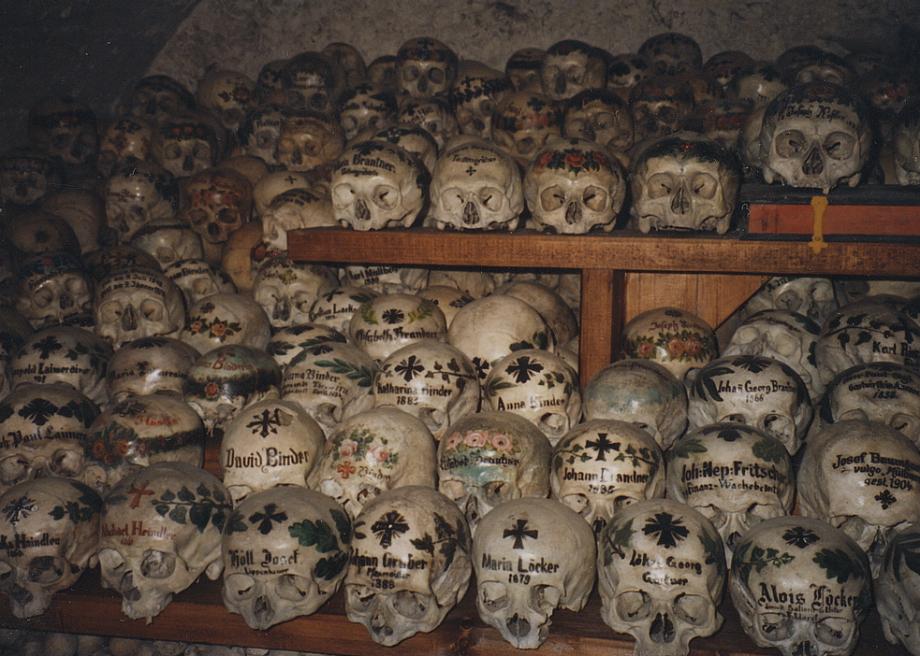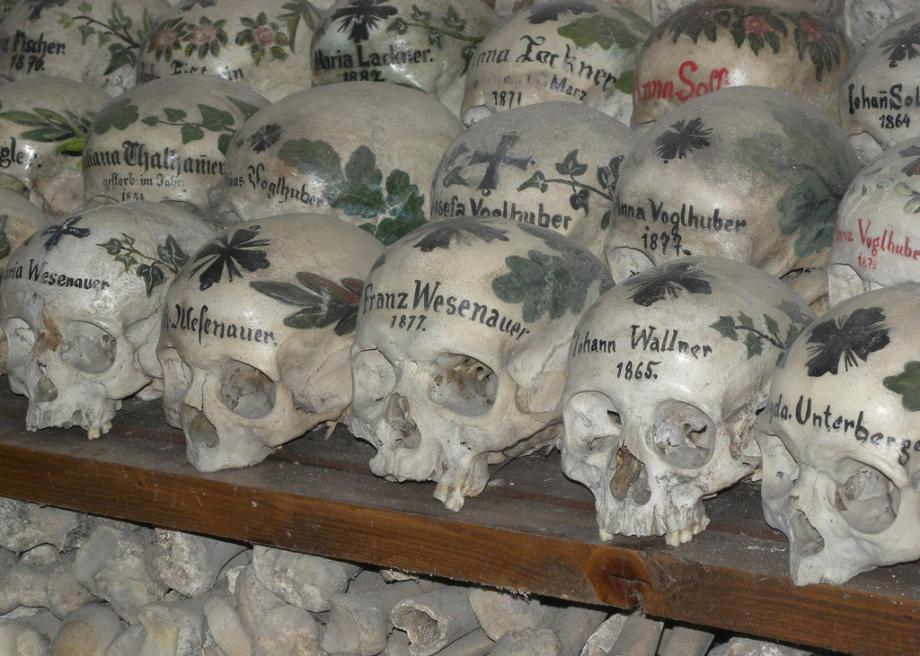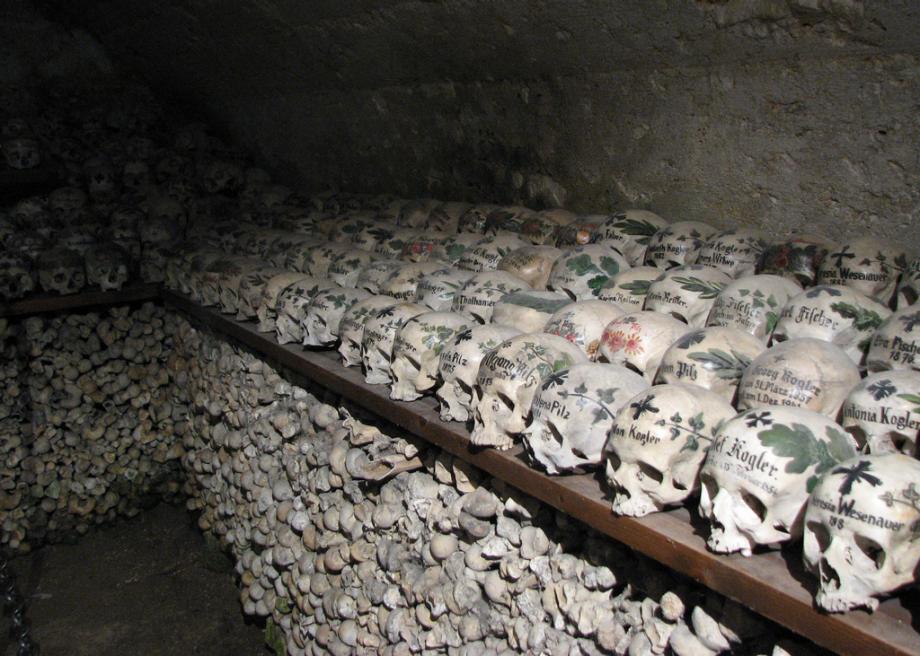The Painted Skulls of Hallstatt Charnel House
Atlas Obscura on Slate is a blog about the world's hidden wonders. Like us on Facebook, Tumblr, or follow us on Twitter @atlasobscura.
For the ultimate memento mori, you need only take a walk through one of Europe's ossuaries. Ossuaries house human bones that have been exhumed from their initial burial site. In places where there is scant room for cemeteries, bodies are interred in a grave and allowed to rest for five years or so. Then they are dug up and their skeletal remains transferred to the ossuary, where they sit alongside the bones of thousands of others.
Many ossuaries aren't just utilitarian storehouses, but chapels and subterranean rooms painstakingly decorated with the bones of their inhabitants. In the cold, musty corridors of the Paris Catacombs, rows of human skulls sit atop walls made from carefully piled femurs. At Sedlec Ossuary in the Czech Republic, garlands of skulls hang from the ceiling and a chandelier made of skulls, shoulder blades, and arm bones dangles from an eave.
Intricately arranged and darkly beautiful, these ossuaries revere death and illustrate the fragility of human life. The macabre decorations also have an equalizing effect. No matter who these people were in life — rich or poor, happy or sad, loved or reviled — in death they are the same: skulls and bones; building blocks; one among thousands, indistinguishable from the rest.
Hallstatt Charnel House in Austria is a little different. Seven hundred skulls in this chapel are painted lovingly with the names of the deceased and the dates on which they died. Each is adorned with symbolic decorations: roses for love, laurels for valor, and crosses on the forehead.
The Hallstatt tradition of painting skulls began around 1720. Decoration styles changed over the centuries — the 18th-century skulls bear dark wreaths, while those from the 19th century onward are brighter and incorporate flowers.
The practice ended during the 1960s, when the Catholic church began to allow cremation. Look carefully, however, and you will find a skull emblazoned with "1983." It was added to the chapel in 1995 and belongs to a woman whose last wish was to become part of the charnel house.
Not all of the skulls at Hallstatt are painted. Some 500 more sit unadorned, untraceable to their owners. Placed beside the personalized skulls, their anonymity is poignant.
Some other astounding ossuaries:
View Hallstatt in a larger map



